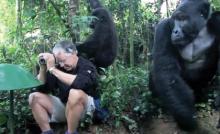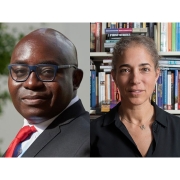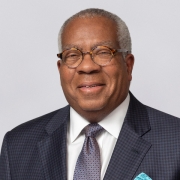Magazine: Close Encounters

On a December expedition to Uganda, nature photographers John J. King II, C’74, and his wife Pam spent two days tracking wild mountain gorillas through a rainforest. On the third day, the Kings woke to find the gorillas had in turn tracked them and were strolling through their camp.
Videos of this incredible interaction have attracted nearly six million viewers on YouTube and garnered international attention for The Common Flat Project, the couple’s online initiative to showcase their wildlife photography and underscore the importance of biodiversity and conservation. Since his days as an anthropology major, John King has been a crab fisherman in Alaska, started four high-technology businesses, and served as senior vice president of Merck Research Laboratories. Since his retirement four years ago, he and his wife have been traveling the world to document its remaining natural places.
Q: There are only about 800 remaining mountain gorillas. As one of the few who’ve interacted with them so closely in the wild, how would you describe your experience?
King: At the time it was, of course, very surprising. We never imagined they would stop or there’d be any kind of interaction. I just happened to be sitting with a movie camera, and as they were walking by, one of the young ones stopped. So I just tried to remember what I was coached to do, which was to be passive. I could feel the breath of the young gorillas as they were grooming me. And then when the sub-adult female came by, it escalated because she’s a much larger animal, and she was behind me, and she had both hands on me. So I remember being totally energized. It was a little disconcerting knowing that the silverback was also sitting right behind me. He’s a really large animal and extremely protective of his family. Later, we were euphoric.
Q: How rare is it for gorillas to interact with humans in this way?
King: What we learned is that it’s very rare. In fact, to interact with adult gorillas, or in this case we had some sub-adults, is fairly unheard of unless you’re a researcher living among the gorillas. But in the last 25 years in which regular people can be taken in to see the gorillas, it’s virtually unknown. The adult gorillas really just ignore humans. It’s the juvenile gorillas that sometimes will approach humans, but usually only briefly.
Q: What other species have you photographed?
King: We’ve traveled to all seven continents, and we’ve photographed everything we’ve seen. We live on Cape Cod, and when we’re not traveling, we spend time in the wild here. We’ve spent a fair amount of time following and photographing humpback whales here, as well as in Alaska and the Caribbean. We just came back from an experience off the Dominican Republic where we were able to snorkel with humpback whales, particularly newly born calves with their mothers. We’ve also been diving with white sharks in South Africa, and we’re among the fewer than 250 westerners who have ever seen and photographed a snow leopard in the wild.
Q: You’ve spent most of your career in biotechnology. What led you to this new effort in conservation and biodiversity?
King: My wife and I like to travel, and we realized about four years ago, when we shifted gears professionally, that there were a lot of wild portions of the world that we hadn’t seen. We wanted to see them and, if we could, record them. We had been interested in photography for a long time and realized we could raise awareness of the importance of biodiversity by documenting unusual encounters. For example, recently we collaborated with the African Wildlife Foundation so that the millions of viewers of our gorilla encounter could be connected directly to their great work in support of mountain gorillas and other wildlife. We use proceeds from the sale of our photographs to support charities that we think are consistent with this conservation message. Pam and I also collaborated on a book of photography called Wild Cape Cod, which is due out this summer. So it’s just kind of taken off.
—Tracey Quinlan Dougherty
To view King’s video, Touched by a Wild Mountain Gorilla, click here.





